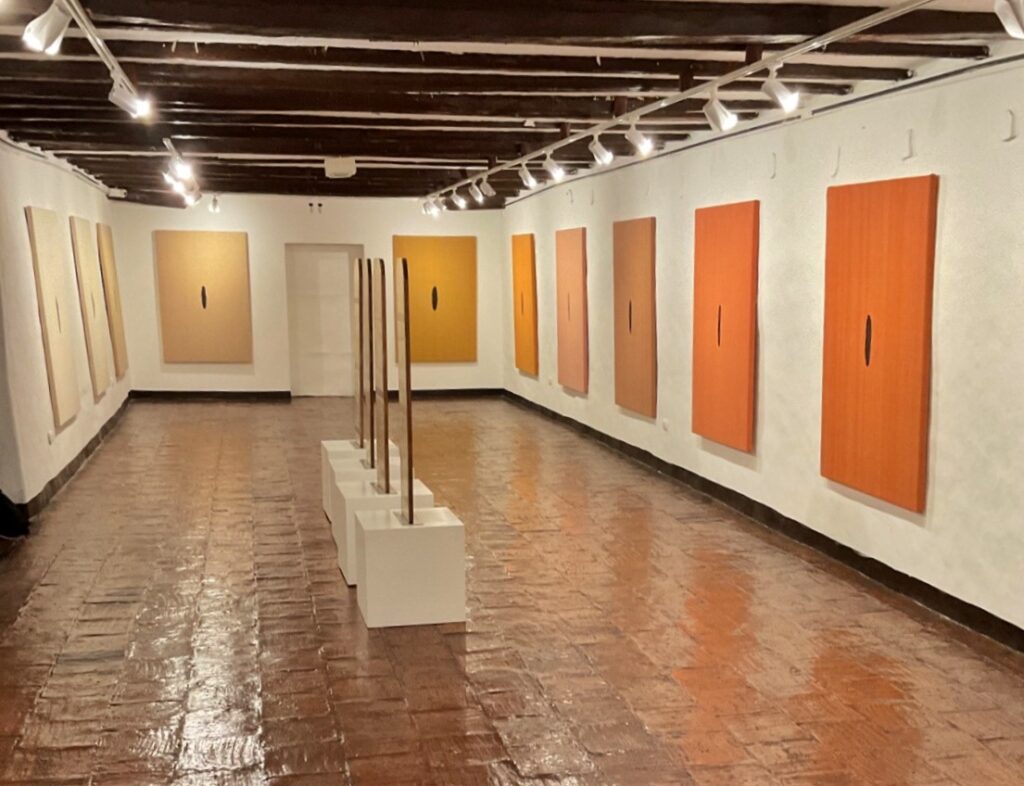
Sandra Gamarra at the 16th Cuenca Biennial
08.12.2023
We are pleased to announce the participation of Sandra Gamarra in “Quizá mañana”, the 16th Cuenca Biennial, from December 8 to March 8, 2024, an edition that reflects on democracy and conflicts of the present, with a special focus on Latin America.
About the artwork:
The invention of race is based on differentiations between phenotypical traits, among which skin color has special significance. As the Peruvian sociologist Aníbal Quijano points out, before America, color was not registered as a distinctive feature in power relations. It was the Eurocentric colonial regime that gave origin and meaning to the category of race since the sixteenth century. The differentiations between the “white race” and the “colored races” generate a gradation between superior and inferior. The naturalization of this ordering makes possible exploitative practices such as slavery.
The series of 20 woven ponchos chromatically translates this order. Popularly, in Peru, the poncho symbolizes sowing and the hole is the trench where the seed is placed so that life can continue to reproduce. The artist extrapolates the idea of sowing to the birth, a birth that is repeated symbolically every time we put our head through the opening of the poncho when we dress in it. On the other hand, the number of ponchos alludes to the number of paintings that make up the only series of castes made in the Viceroyalty of Peru in 1770.
These 20 ponchos, woven in alpaca and sheep wool, can be read as modernist paintings, with the gesture of cutting the surface as a rupture; or as the representation of the cultivated land, the cut in this case in the possibility of the continuation of life.
The person dresses and is born, not only of a woman, but is born a culture and to a -same- land. The range of colors can be understood as “earth” tones, natural tones, or skin tones. We can place ourselves in these tones and in this exercise think about our place in this degradé.
About the artwork:
The invention of race is based on differentiations between phenotypical traits, among which skin color has special significance. As the Peruvian sociologist Aníbal Quijano points out, before America, color was not registered as a distinctive feature in power relations. It was the Eurocentric colonial regime that gave origin and meaning to the category of race since the sixteenth century. The differentiations between the “white race” and the “colored races” generate a gradation between superior and inferior. The naturalization of this ordering makes possible exploitative practices such as slavery.
The series of 20 woven ponchos chromatically translates this order. Popularly, in Peru, the poncho symbolizes sowing and the hole is the trench where the seed is placed so that life can continue to reproduce. The artist extrapolates the idea of sowing to the birth, a birth that is repeated symbolically every time we put our head through the opening of the poncho when we dress in it. On the other hand, the number of ponchos alludes to the number of paintings that make up the only series of castes made in the Viceroyalty of Peru in 1770.
These 20 ponchos, woven in alpaca and sheep wool, can be read as modernist paintings, with the gesture of cutting the surface as a rupture; or as the representation of the cultivated land, the cut in this case in the possibility of the continuation of life.
The person dresses and is born, not only of a woman, but is born a culture and to a -same- land. The range of colors can be understood as “earth” tones, natural tones, or skin tones. We can place ourselves in these tones and in this exercise think about our place in this degradé.